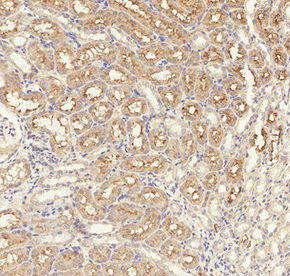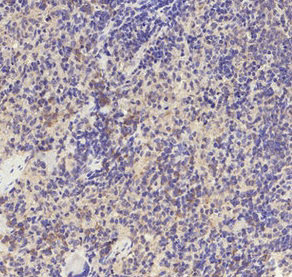| Image |
-
Western Blot analysis of MOUSE-LIVER cells using Phospho-TGFβ RI (S165) Polyclonal Antibody
-
Immunohistochemical analysis of paraffin-embedded Human-liver tissue. 1,TGFβ RI (phospho Ser165) Polyclonal Antibody was diluted at 1:200(4°C,overnight). 2, Sodium citrate pH 6.0 was used for antibody retrieval(>98°C,20min). 3,Secondary antibody was diluted at 1:200(room temperature, 30min).
-
Immunohistochemical analysis of paraffin-embedded Rat-kidney tissue. 1,TGFβ RI (phospho Ser165) Polyclonal Antibody was diluted at 1:200(4°C,overnight). 2, Sodium citrate pH 6.0 was used for antibody retrieval(>98°C,20min). 3,Secondary antibody was diluted at 1:200(room temperature, 30min).
-
Immunohistochemical analysis of paraffin-embedded Rat-spleen tissue. 1,TGFβ RI (phospho Ser165) Polyclonal Antibody was diluted at 1:200(4°C,overnight). 2, Sodium citrate pH 6.0 was used for antibody retrieval(>98°C,20min). 3,Secondary antibody was diluted at 1:200(room temperature, 30min).
|









